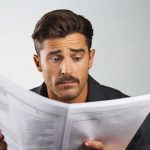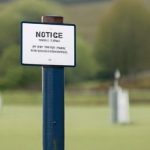DRO Eligibility Questions: Do I Qualify for a Debt Relief Order
DRO Eligibility Questions: Do I Qualify for a Debt Relief Order
Debt can be overwhelming, and for those struggling to manage it, finding the right solution is crucial. One option available is Debt Relief Order (DRO). A DRO is designed to help individuals with low incomes and minimal assets get a fresh start by writing off their debts. However, not everyone qualifies for a DRO. This Johnny Debt free debt information post will guide you through the key eligibility questions to determine if a DRO might be the right solution for you.
Understanding Debt Relief Orders
Before diving into the eligibility criteria, it’s important to understand what a DRO is and how it works. A Debt Relief Order is a form of debt relief that freezes your debts for a year. If your financial situation hasn’t improved after this period, your debts are written off. A DRO is particularly suited for those who have low income, few assets, and relatively small debts.
Why Eligibility Matters
A DRO can provide significant relief, but it’s not available to everyone. Strict eligibility criteria ensure that DROs are reserved for those who genuinely need them. By understanding these criteria, you can save time and effort by quickly determining whether a DRO is a feasible option for your circumstances.
Key Eligibility Questions
Let’s explore the main questions you need to answer to determine your eligibility for a DRO. You may also be interested in the Debt Relief Order Flowchart.
1. Does Your Total Debt Amount to £50,000 or Less?
The first criterion is the total amount of debt you owe. To qualify for a DRO, your total debt must be £50,000 or less. This includes all unsecured debts such as credit cards, personal loans, and overdrafts. If your total debt exceeds this amount, a DRO is not suitable for you, and you might need to consider other debt management options.
2. Do You Own a House?
Ownership of significant assets, such as property, can disqualify you from a DRO. Specifically, if you own a house, you will not be eligible for a DRO. This rule ensures that DROs are available to those without substantial assets that could be sold to repay their debts.
3. Do You Have More Than £2,000 Worth of Assets (Excluding Essential Items)?
Even if you don’t own a house, you still need to consider the total value of your assets. To qualify for a DRO, your assets must not exceed £2,000. Essential items such as clothing, furniture, and basic household items are excluded from this calculation. If you have non-essential assets worth more than £2,000, you might need to sell some of these assets to bring your total below the threshold.
4. Do You Have a Spare Income of More Than £75 Per Month After Essential Expenses?
Your disposable income, or the amount of money left after covering essential expenses, must be £75 or less per month to qualify for a DRO. This ensures that DROs are targeted at individuals who genuinely cannot afford to pay their debts. If your spare income exceeds this amount, alternative solutions like a Debt Management Plan may be more suitable.
5. Have You Had a DRO in the Last 6 Years?
A DRO is not a recurring solution. If you have already had a DRO in the last six years, you are not eligible to apply for another one. This rule prevents repeated use of DROs and encourages individuals to find long-term solutions to their financial problems.
Take the DRO Eligibility Quiz
To help you determine if you qualify for a DRO, we have created a quick and simple quiz. This quiz will guide you through the key eligibility questions outlined above. You won’t need to provide any personal information to complete this quiz, ensuring your privacy and anonymity. We’ve created a quick and simple quiz to help you determine if a Debt Relief Order (DRO) is suitable for you. The quiz is designed to guide you through a few straightforward questions about your financial situation. Rest assured, you won’t need to provide any personal information to complete this quiz. It’s a private and anonymous way to assess your eligibility for a DRO.
DRO Eligibility Checker
Does your total debt amount to £50,000 or less?
Alternative Solutions
If you find that you do not qualify for a DRO, don’t be disheartened. There are other debt solutions available. These include:
- Debt Management Plans (DMPs): Informal agreements with your creditors to pay back your debts at an affordable rate.
- Individual Voluntary Arrangements (IVAs): Legally binding agreements to pay off a portion of your debt over a set period, usually five years.
- Bankruptcy: A more drastic measure that can provide a fresh start but has significant long-term consequences.
Each of these options has its own set of criteria and implications, so it’s important to seek professional advice to find the best solution for your circumstances.
Seeking Professional Advice
Navigating debt relief options can be complex, and making the wrong choice can have long-lasting consequences. Therefore, it’s advisable to seek advice from for example Citizens Advice, but be aware of the downside. They can provide personalised guidance based on your specific situation and help you explore all available options.
Conclusion
Determining your eligibility for a Debt Relief Order is a crucial first step towards regaining control of your finances. By understanding the key eligibility questions and taking the DRO Eligibility Quiz, you can quickly ascertain whether a DRO is a viable option for you. Remember, if a DRO isn’t suitable, there are other solutions available to help you manage and reduce your debt. Seek professional advice to ensure you make the best decision for your financial future.
| |
How to Get Out of Debt is an eight-stage strategy that enables readers to pay off debt and fix their finances for good. This book has it all covered. | |
| |
How to Live for Free - I have done a full review on the book here: How to Live for Free | |
| |
The Money Diet - revised and updated: The ultimate guide to shedding pounds off your bills and saving money on everything! | |
 |
Pay Off Your Debt Book: Your Ultimate Financial Planner and Budget Companion for Managing Money Discover the Essential Debt Management and Budgeting Tool for Financial Success | |





